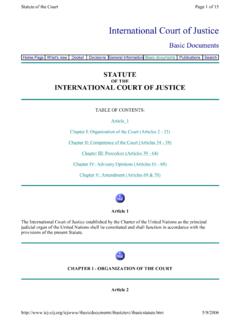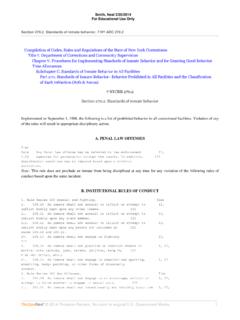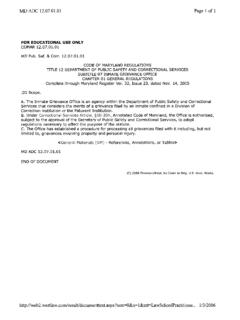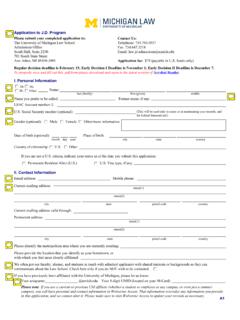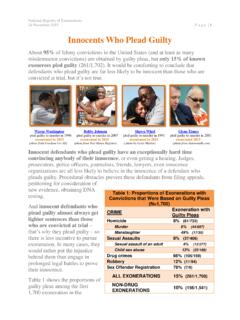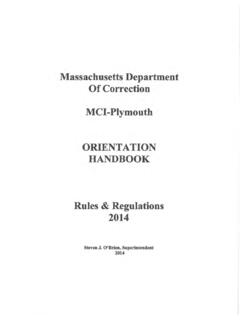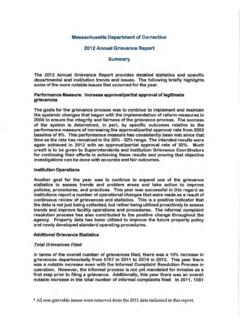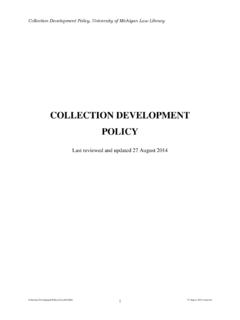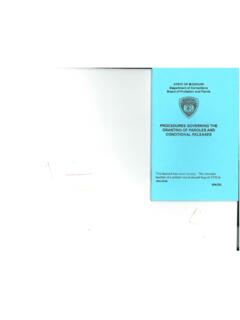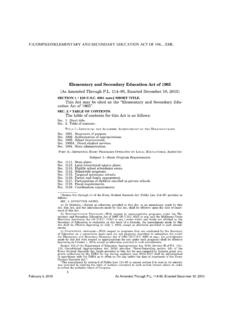Transcription of RACE AND WRONGFUL CONVICTIONS IN THE UNITED TATES
1 RACE AND WRONGFUL CONVICTIONS IN THE UNITED STATES Samuel R. Gross, Senior Editor, Maurice Possley, Senior Researcher Klara Stephens, Research Fellow National Registry of Exonerations March 7, 2017 NATIONAL REGISTRY OF EXONERATIONS NEWKIRK CENTER FOR SCIENCE AND SOCIETY UNIVERSITY OF CALIFORNIA IRVINE IRVINE, CALIFORNIA 92697 This Report was made possible by a generous grant from the Proteus Fund. National Registry of Exonerations RACE AND WRONGFUL CONVICTIONS 7-March-17 Page | ii Executive Summary African Americans are only 13% of the American population but a majority of innocent defendants wrongfully convicted of crimes and later exonerated.
2 They constitute 47% of the 1,900 exonerations listed in the National Registry of Exonerations (as of October 2016), and the great majority of more than 1,800 additional innocent defendants who were framed and convicted of crimes in 15 large-scale police scandals and later cleared in group exonerations. We see this racial disparity for all major crime categories, but we examine it in this report in the context of the three types of crime that produce the largest numbers of exonerations in the Registry: murder, sexual assault, and drug crimes.
3 I. Murder Judging from exonerations, innocent black people are about seven times more likely to be convicted of murder than innocent white people. A major cause of the high number of black murder exonerations is the high homicide rate in the black community a tragedy that kills many African Americans and sends many others to prison. Innocent defendants who are falsely convicted and exonerated do not contribute to this high homicide rate. They like the families of victims who are killed are deeply harmed by murders committed by others.
4 African-American prisoners who are convicted of murder are about 50% more likely to be innocent than other convicted murderers. Part of that disparity is tied to the race of the victim. African Americans imprisoned for murder are more likely to be innocent if they were convicted of killing white victims. Only about 15% of murders by African Americans have white victims, but 31% of innocent African-American murder exonerees were convicted of killing white people. The CONVICTIONS that led to murder exonerations with black defendants were 22% more likely to include misconduct by police officers than those with white defendants.
5 In addition, on average black murder exonerees spent three years longer in prison before release than white murder exonerees, and those sentenced to death spent four years longer. Many of the CONVICTIONS of African-American murder exonerees were affected by a wide range of types of racial discrimination, from unconscious bias and institutional discrimination to explicit racism. Most WRONGFUL CONVICTIONS are never discovered. We have no direct measure of the number of all CONVICTIONS of innocent murder defendants, but our best estimate suggests that they outnumber those we know about many times over.
6 Judging from exonerations, half of those innocent murder defendants are African Americans. p. 1 p. 1 p. 4 pp. 4-6 pp. 6-9 pp. 9-11 pp. 11-12 National Registry of Exonerations RACE AND WRONGFUL CONVICTIONS 7-March-17 Page | iii II. Sexual Assault Judging from exonerations, a black prisoner serving time for sexual assault is three-and-a-half times more likely to be innocent than a white sexual assault convict. The major cause for this huge racial disparity appears to be the high danger of mistaken eyewitness identification by white victims in violent crimes with black assailants.
7 Assaults on white women by African-American men are a small minority of all sexual assaults in the UNITED States, but they constitute half of sexual assaults with eyewitness misidentifications that led to exoneration. (The unreliability of cross-racial eyewitness identification also appears to have contributed to racial disparities in false CONVICTIONS for other crimes, but to a lesser extent.) Eyewitness misidentifications do not completely explain the racial disparity in sexual assault exonerations.
8 Some misidentifications themselves are in part the products of racial bias, and other CONVICTIONS that led to sexual assault exonerations were marred by implicit biases, racially tainted official misconduct and, in some cases, explicit racism. African-American sexual assault exonerees received much longer prison sentences than white sexual assault exonerees, and they spent on average almost four-and-a-half years longer in prison before exoneration. It appears that innocent black sexual assault defendants receive harsher sentences than whites if they are convicted, and then face greater resistance to exoneration even in cases in which they are ultimately released.
9 III. Drug Crimes The best national evidence on drug use shows that African Americans and whites use illegal drugs at about the same rate. Nonetheless, African Americans are about five times as likely to go to prison for drug possession as whites and judging from exonerations, innocent black people are about 12 times more likely to be convicted of drug crimes than innocent white people. In general, very few ordinary, low-level drug CONVICTIONS result in exoneration, regardless of innocence, because the stakes are too low.
10 In Harris County, Texas, however, there have been 133 exonerations in ordinary drug possession cases in the last few years. These are cases in which defendants pled guilty, and were exonerated after routine lab tests showed they were not carrying illegal drugs. Sixty-two percent of the Harris County drug-crime guilty plea exonerees were African American in a county with 20% black residents. The main reason for this racial disproportion in CONVICTIONS of innocent drug defendants is that police enforce drug laws more vigorously against African Americans than against members of the white majority, despite strong evidence that both groups use drugs pp.
